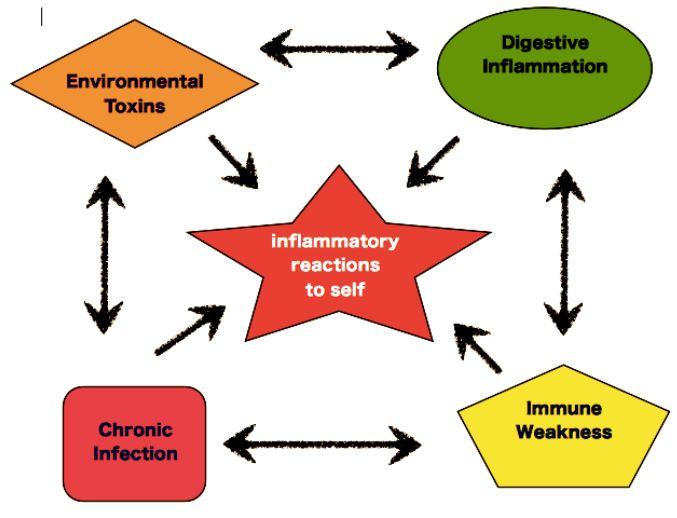An intriguing new study finds that a saltier diet may play a role in autoimmune disorders, which have been on the rise in recent years.
Since this increase cannot be explained solely by genetic factors, researchers hypothesize that the sharp increase in these diseases is linked to environmental factors. Among the suspected culprits are changes in lifestyle and dietary habits in developed countries, where highly processed food and fast food are often on the daily menu. These foods tend to have substantially higher salt content than home-cooked meals.
Specifically, the research team found that increased salt intake spurs production of pathogenic TH17 cells, which “have been shown to be critical for the development of experimental autoimmune encephalomyelitis (EAE), an animal model for multiple sclerosis.”
Of course, it could well be that it’s not salt itself that’s the problem but what the salt is in or on – something future research will need to suss out.
 Even so, it’s important to remember that diet is always just one factor among many.
Even so, it’s important to remember that diet is always just one factor among many.
For one of the defining features of modern illness is that it’s typically chronic (long-lasting, enduring over time) and multifactorial, largely driven by lifestyle.
Unlike a disease like smallpox, say, that’s caused by one specific pathogen infecting a vulnerable person, there’s no single cause for chronic conditions such as heart disease, diabetes, respiratory disease and, of course, autoimmune disorders.
Salt may prove to be one trigger, but there are plenty of others, including mercury toxicity.
Sometimes, this raises a question for folks: If mercury amalgam fillings are so horrible, then why doesn’t everyone who has them get sick? In fact, we could ask this about plenty of toxins: Why doesn’t everyone exposed to a flu virus get sick? Why doesn’t everyone exposed to dioxins become chronically ill?
Part of the answer, of course, rests on the issue of vulnerability. Those with heavier body burdens, say, may be more affected by further toxic exposures. Those with weaker immune systems are more apt to respond to viruses. Those with lighter burdens or strong immune systems may have no problems at all.
Likewise, a healthy person who is able to excrete mercury fairly efficiently through the normal biological routes may tolerate amalgam fillings for years, while someone who is not may develop toxicity symptoms fairly quickly.
Animal models such as the University of Maryland study in 2003 suggests that even low-dose mercury accelerates autoimmune problems, “even when the exposure occurs before the development of the disease” (in this case, lupus).
The lead investigator of the study, Charles S. Via, M.D., professor of medicine, microbiology and immunology at the University of Maryland School of Medicine, says previous studies have found that mercury exposure in animals can exacerbate pre-existing autoimmune disease and even induce autoimmune disease in susceptible animals.
“Our study takes the link further by demonstrating that exposure to mercury prior to the induction of an autoimmune disease in mice significantly worsens the severity of that disease after it develops,” says Dr. Via, who is also a rheumatologist at the University of Maryland Medical Center.
Sehnert, Jacobson and Sullivan have gone so far as to conclude “that mercury toxicity is an autoimmune disorder. This was summarized recently in an article in Advance magazine. Its wide range of symptoms can only be accounted for by multiple adverse effects on the immune system, nerve tissue and connective tissue in general.”
Though it’s not specific to dental mercury, this PowerPoint from the Society of Toxicology gives a good overview of the science of this relationship between mercury and autoimmune conditions.
Clinically, it’s often the case that amalgam-related illness is accompanied by a long history of toxic insults, including environmental exposures, diet and other lifestyle factors. Amalgam removal alone shouldn’t be seen as super cure that will automatically restore health. As we’ve noted before, all factors contributing to illness must be addressed. That’s why we work closely with naturopathic physicians and other healers: 1) to prime the body for healing from the dental issues Dr. Glaros addresses; and 2) to support detox and maintenance afterwards.
Sometimes, it’s even possible that though mercury is present in a person’s mouth, it’s not even the primary source of illness or dysfunction. The patient may still ask us to address it, but it’s not the root cause.
And sometimes it is. This is why extensive testing before any treatment begins is so vital. Tending to something as essential and precious as your health and well-being should never be rushed.
And if you do choose to have your mercury fillings replaced, do it with someone whose beliefs and practices are consistent with yours. If you don’t know much about what “mercury-safe” dentistry entails, study up before you start the process.
Image via Living Longer Medical Resort